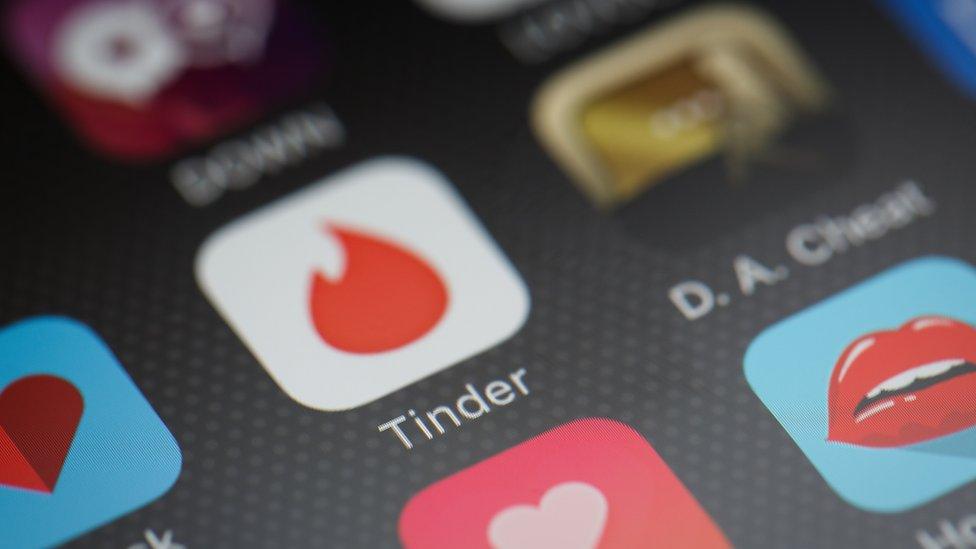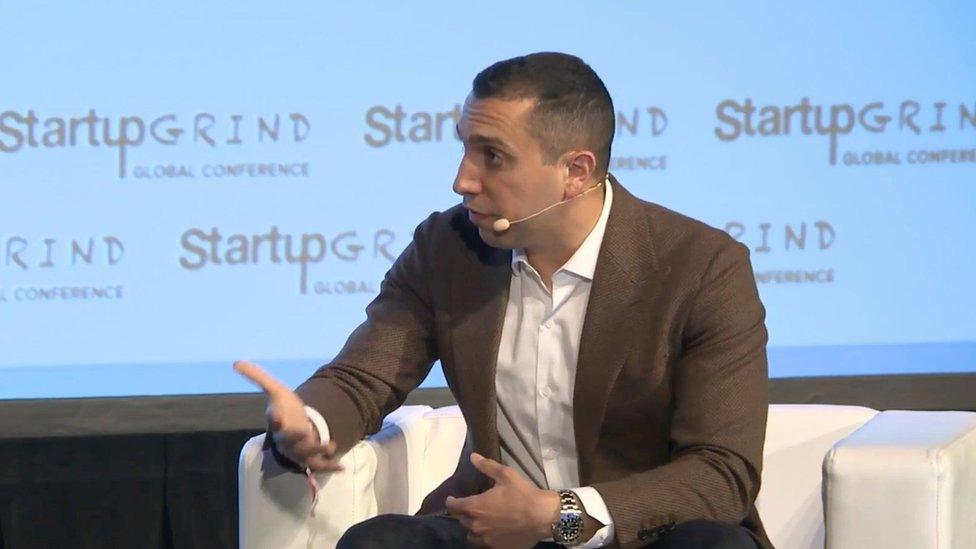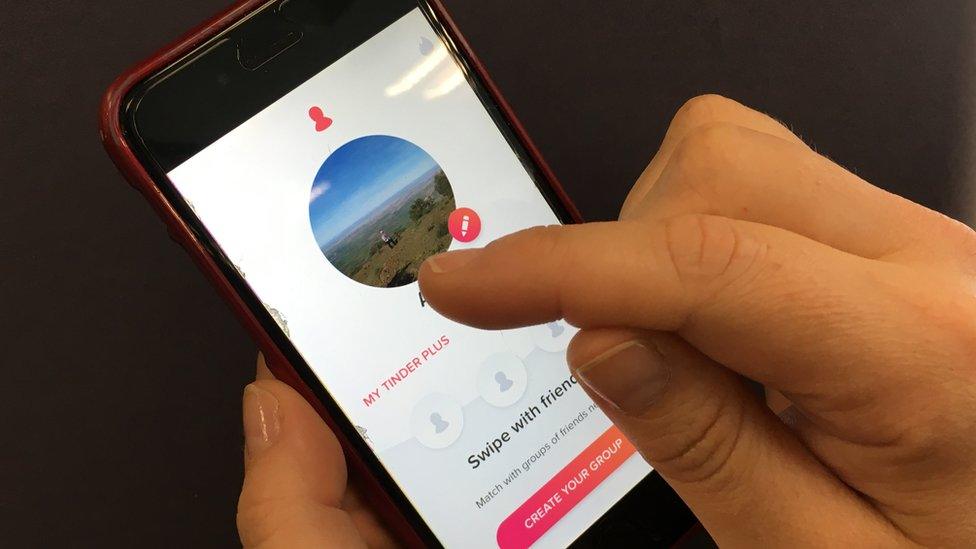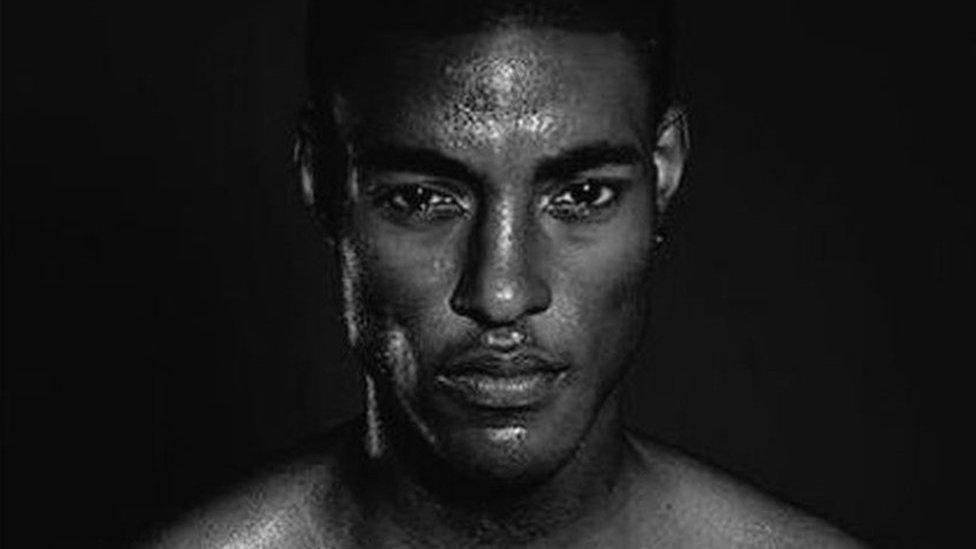Tinder wants AI to set you up on a date
- Published
- comments

When I first met Sean Rad, back in 2013, Tinder was a blossoming dating app. It was known primarily for, how shall I put it, casual relationships.
Back then he told me Tinder was “good for humanity”, a line I instantly latched onto as being faintly ridiculous, and wonderful for a headline.
But now when I think of how Tinder has impacted my life, and those of several people close to me, I start to see what he was getting at.
Life-changing things have happened to millions of people thanks to that simple swipe-yes-swipe-no interface.
I know people who have married their Tinder matches. I know many others who are in serious relationships. And yes, I know many people who have had casual hook-ups and one-night stands. Yet why that last point is seen as a negative to be joked about I’ll never know. People have been doing that in bars for well over 100 years.
Anyway, Tinder is growing up. It’s now a serious technology company tackling one of life’s most important matters, and is by far the most popular dating app worldwide.
After a lot of boardroom musical chairs, external, Mr Rad is the chairman of both Tinder and Swipe Ventures, the arm of the company designed to buy other dating-related technologies.
One of which is artificial intelligence. And its collision with dating might be the most intriguing application of AI yet.

Sean Rad spoke at the Startup Grind Global conference in Redwood City, California
“I think this might sound crazy,” Mr Rad said on Tuesday at tech conference Start-Up Grind.
"In five years time, Tinder might be so good, you might be like “Hey [Apple voice assistant] Siri, what’s happening tonight?’
“And Tinder might pop up and say 'There’s someone down the street you might be attracted to. She’s also attracted to you. She’s free tomorrow night. We know you both like the same band, and it’s playing - would you like us to buy you tickets?’… and you have a match.
"It’s a little scary."
Also a little lazy, you might say. Part of the dating process is surely assessing someone’s tastes and idea of fun. If that’s taken out of the equation, it’s a lot harder to understand a person.
Still, even though it can be difficult to admit, dating really is a numbers game, and right now the data Tinder uses is primitive: age, location and mutual friends - as well as a few mutual interests as defined by what you “like” on Facebook. Why not add a few parameters and make it even more likely you will click?
Traffic light party
Anyone who has been a student will know about “traffic light parties” (or stoplights if you’re an American). A hideous concept in which you go on a night out dressed in either red, amber or green. Red means “in a relationship and happy”. Green means “single and looking”. Amber means you’re a bad human being.
The idea is that two “greens” can find each other easily. Quite why anyone would go as a “red” is anyone’s guess.
Now, this works (in theory) on university campuses. But such a system would be bedlam in the real world - particularly on St Patrick’s Day, I'd imagine.
But you have to admit, a way of knowing someone’s relationship status without having to ask would be a very useful tool. Indeed, it’s what made Facebook popular in its early days.
Mr Rad sees a time when Tinder could offer a form of real-life traffic party through augmented reality.
AR is the technology that overlays digital images onto the real world as you walk around. So far the only truly popular application of it has been Pokemon Go, which, while bringing people together, isn’t the relationship fast-track most people are presumably looking for.
But what if you could use AR to meet potential partners?

"That will definitely impact dating,” Mr Rad said, noting Tinder is popular for so many people because it allows us to show interest in a person without the fear of rejection.
"You can imagine how, with augmented reality, that experience could happen in the room, in real time. The impact is profound as these devices get closer to your senses, to your eyes, to your experiences.”
That might make you deeply uncomfortable. I don't blame you. As ever, it will be up to technology companies - not just Tinder - to roll out such ideas in way that doesn’t encroach on privacy, or indeed, common decency and manners. The key word here is, as always, consent.
Tinder’s future lives and breathes on its ability to remain the most popular app for getting people together and into relationships. More recently, rival services like Bumble have shown signs of disrupting Tinder’s dominance. Bumble’s key selling point is the fact women have to initiate the conversations.
But there’s plenty of market to go round. Tinder now has a far more global focus, Mr Rad said, with approximately 600 million smartphone-toting single people ready to find The One.
Follow Dave Lee on Twitter @DaveLeeBBC, external and on Facebook, external. You can reach Dave securely through encrypted messaging app Signal on: (628) 400-7370
- Published16 December 2016

- Published4 August 2016

- Published14 February 2017
